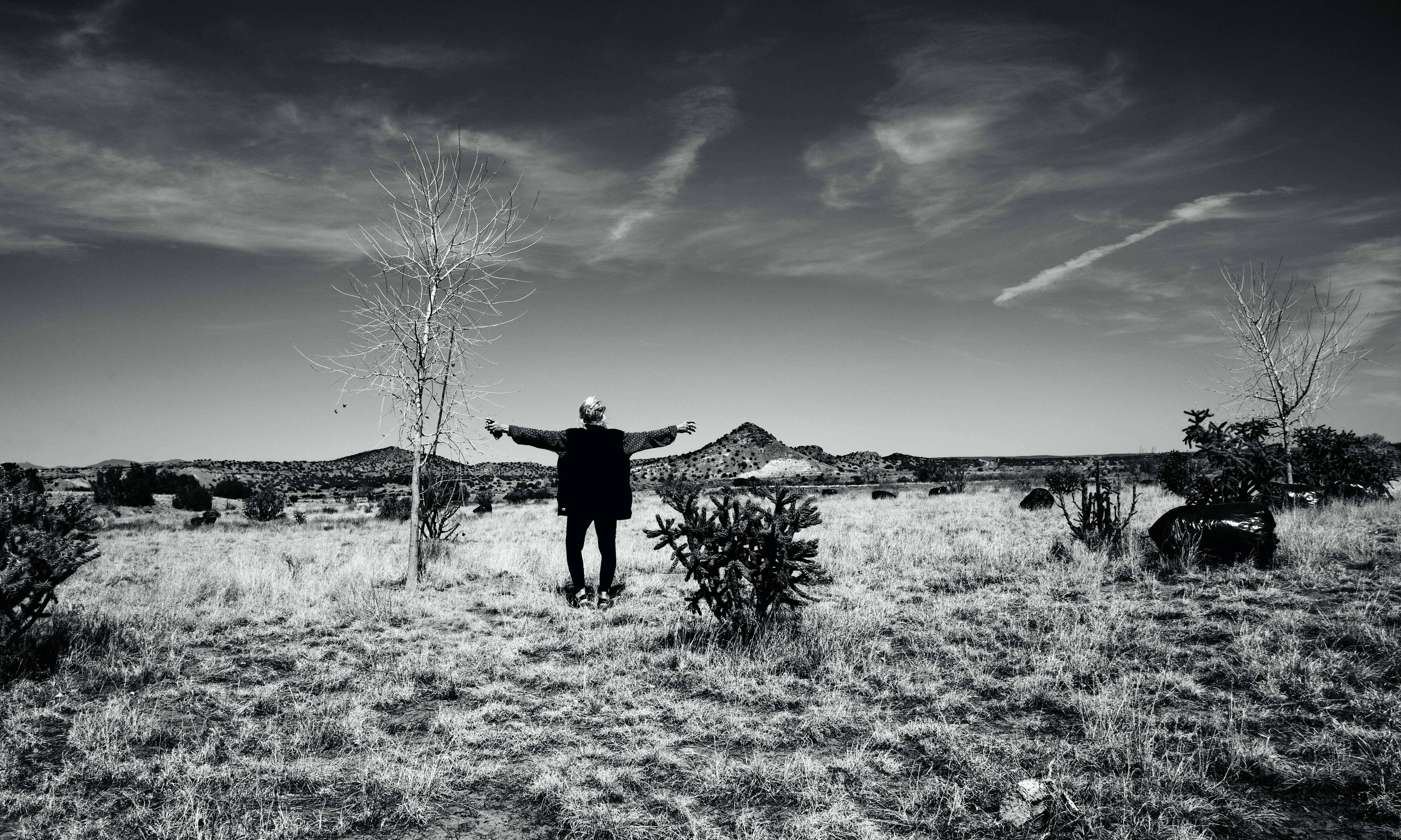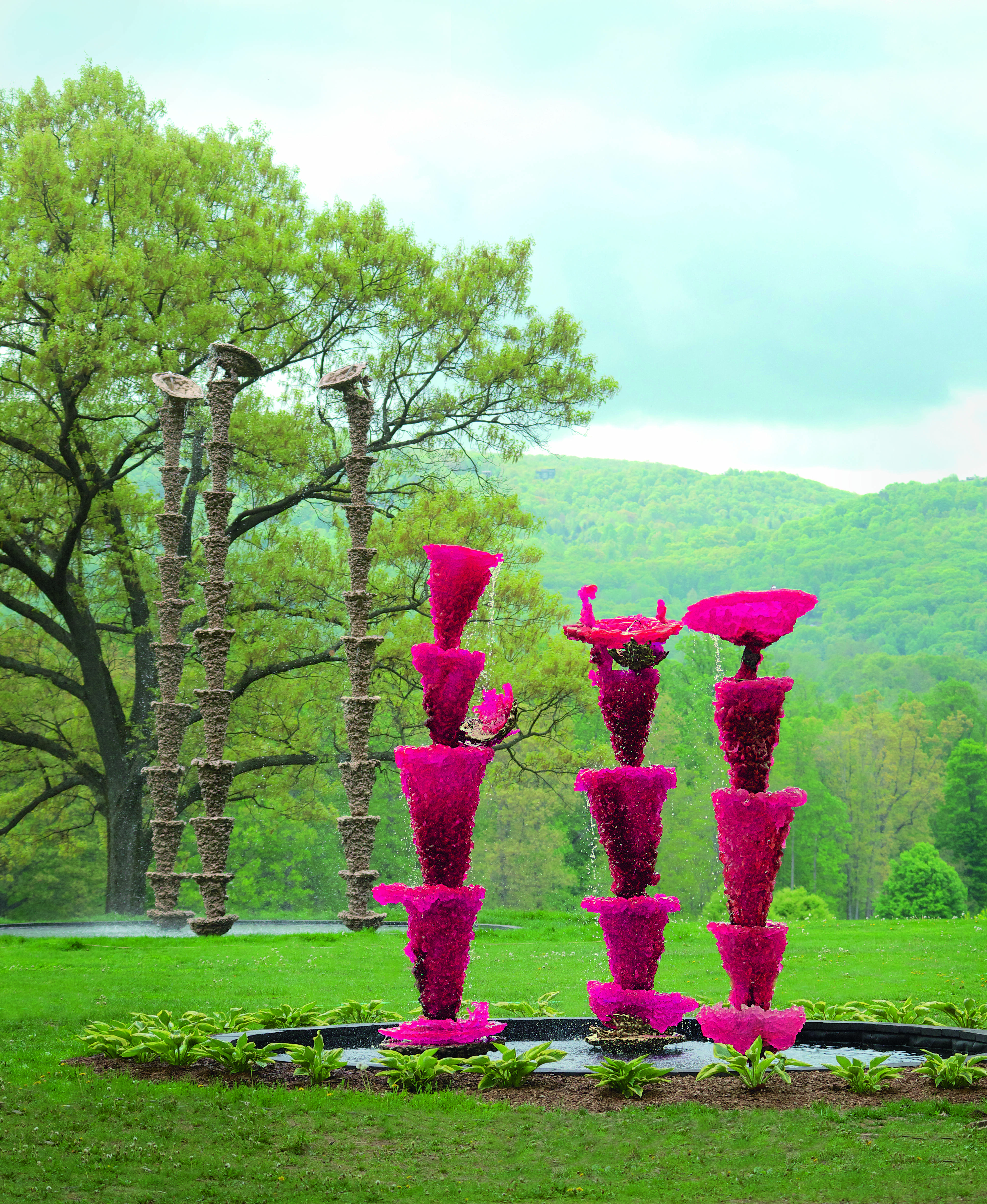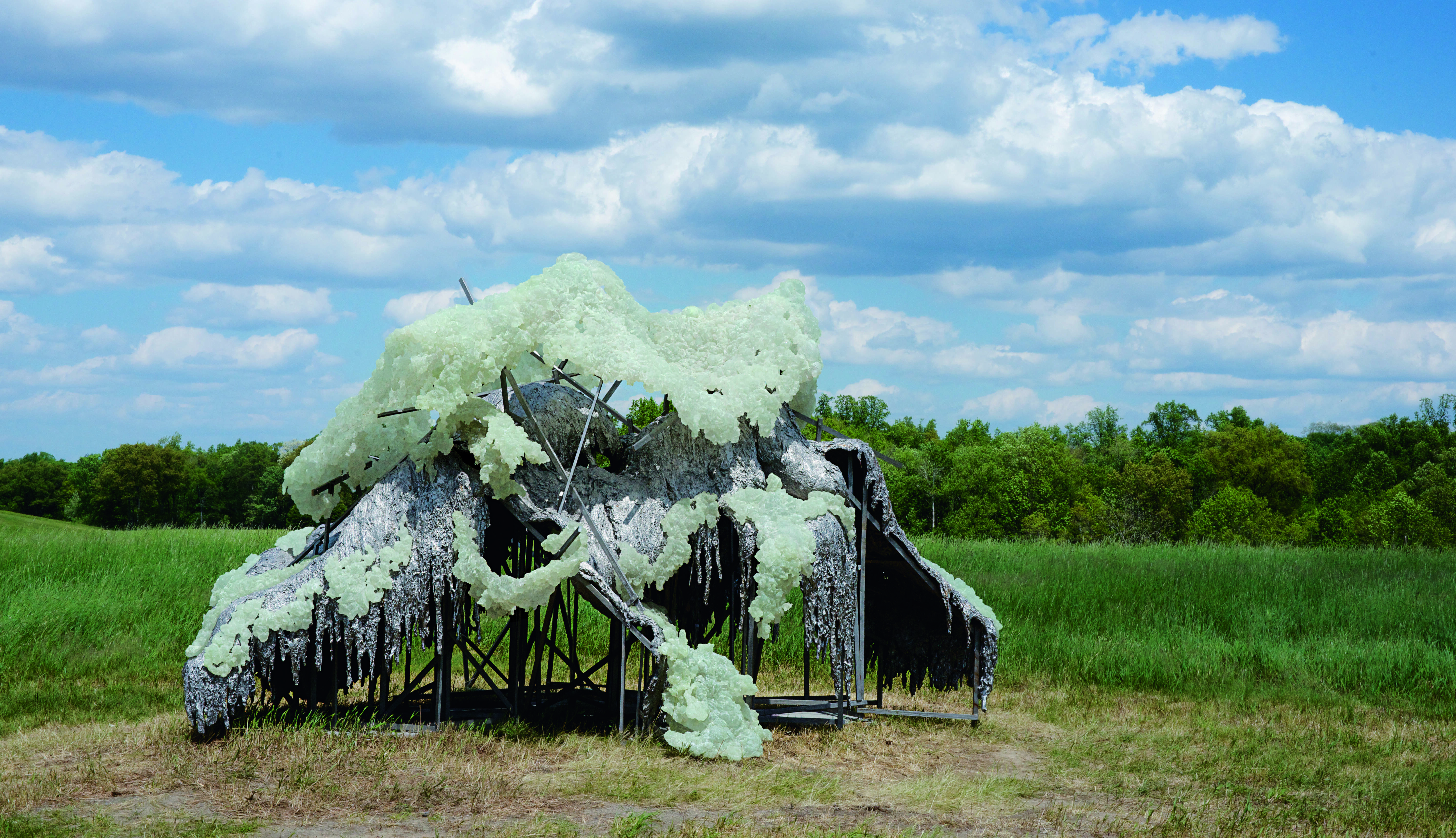
Landscape and Lynda Benglis
The artist doesn’t quite paint landscapes, but many of her sculptures have been created in response to her natural environment
The American sculptor Lynda Benglis opens the Artist’s Choice section of our new book with a black-and-white photograph of herself as a young girl, under a tree, beside a lake. Browse through the book, and you may find it hard to make the link between Benglis’s beautiful, abstract sculptures, and the watery environment in which she was raised.
Read on, however, and you’ll soon realise how closely the artist and her environment are interwoven. Benglis may have made her name in Manhattan during the mid-to-late 20th century, yet she’s no native New Yorker. She was born in Lake Charles, Louisiana in 1941, and still recalls her life in this watery landscape with detailed affection.
“There are a lot of bayous and the River Calcasieu, and there is a Lake Charles,” the artist is quoted as saying in our new book. “It was connected also to the canal that serviced the ships from Florida to Texas. I remember very early on the water there and the fact that my dad once took me to the lake, Lake Charles, the shores, and he got a clam and he opened it and we ate it.”
She doesn’t snack on Louisiana seafood so much today; instead, Benglis has studios in Santa Fe, New York, India and Greece, yet the link between her flowing, biomorphic works and the environment in which they are made is clear.
“I see those landscapes in most of my work, the rivers and the swamps, and even the crawfish mounds in what used to be the open rice fields but all my experiences of the natural world somehow find their way into my work,” she tells the curator Andrew Bonacina in her monograph, which forms part of Phaidon’s Contemporary Artist Series.

Lynda Benglis, Bounty, Amber Waves, Fruited Plane, 2014; Pink Ladies, 2014; Pink Lady (for Asha), 2013. Installation view at Storm King Art Center, Mountainville, New York, 2015; 2022 Lynda Benglis / Licensed by VAGA at Artists Rights Society (ARS), NY. Photo: Jerry L. Thompson, Courtesy Storm King Art Center
The artist’s most explicit response to the landscape came in 2015, when Benglis staged an exhibition at the Storm King Art Center in New York State. The show, entitled Water Sources, featured works from a series of fountains which Benglis had been creating since the 1980s, as well as a new piece, Hills and Clouds. This huge new sculpture was made from cast phosphorescent pigmented polyurethane, on a frame of stainless steel. In our book the art historian Bibiana Obler characterises it as "a craggy, frozen landscape, or a creature spawned by a meeting of earth and sky."
It’s not a direct representation of a landscape, but "a form that operates more like a landscape, whose orienting relationship is between its own mass as well as its relationship to the ground below it and the sky above," writes Storm King Art Center’s artistic director Nora Lawrence in the book.

Lynda Benglis, Hills and Clouds, 2013-15. Cast phosphorescent pigmented polyurethane and stainless steel. Installation view at Storm King Art Center, Mountainville, New York, 2015; 2022 Lynda Benglis / Licensed by VAGA at Artists Rights Society (ARS), NY. Photo: Jerry L. Thompson, Courtesy Storm King Art Center
In this sense, readers may recall that Benglis is a contemporary of land art pioneers, such as Nancy Holt, Robert Smithson and Michael Heizer, whose large-scale artworks are often viewed as a geographical response to the lay of the land. Benglis’s sculpture isn’t quite so big, but it is made in reply to Storm King Art Center’s undulating land and sky.
As its name suggests, Hills and Clouds has two distinct parts. "The lower element, cast in stainless steel, preserves the distinctly grassy quality of its original model, created in hemp and plaster. This earthly, and earth-bound, stainless-steel section forms the hills," writes Lawrence. "Above this grassy section, layered onto and emanating from the stainless steel, is a significant blossoming of billowy, buoyant and pillow-like polyurethane resin, cast from an original made of pressurized foam: the clouds, held aloft."
The sculpture recalls Benglis’s early love of water, but is also a response to the lay of the land around Storm King Art Center. As Lawrence explains, Benglis initially wanted to float Hills and Clouds in one of Storm King’s ponds, but the logistical considerations of doing so with a work so large and heavy made this impossible. Instead the artist placed the work at the end of a long, gravel road, high in an expansive field.
"Benglis has expressed her satisfaction, noting that the work was able to be seen at night glowing from the nearby New York State Thruway," writes Lawrence. "'We talked about floating it on top of the water, or on a raft’, she said, ‘but we floated it, in a way, in the hills'."

Lynda Benglis
To see further images from that show, among many other aspects of the work of Lynda Benglis, buy a copy of Lynda Benglis here.